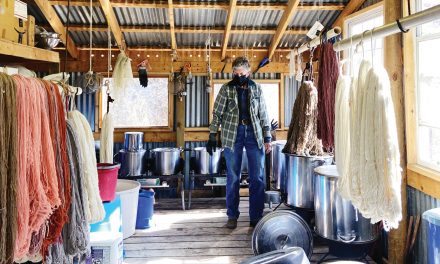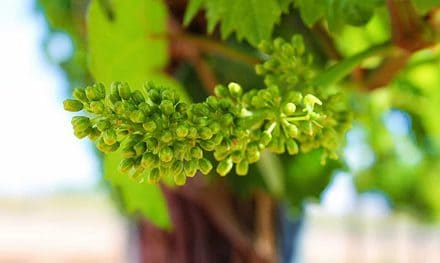For New Mexico, Healthy Forests Mean Good Beer
by Michael Dax

2011 Las Conchas fire. Photo by Craig Allen.
On the afternoon of June 26, 2011, in a stretch of forest southwest of Los Alamos, an aspen tree fell on a powerline and ignited the Las Conchas fire. Due to high winds, the fire spread quickly, and after only five days, it had become the largest wildfire in New Mexico state history. Over the next month, it would burn more than 150,000 acres. The blaze threatened the town of Cochiti and forced an evacuation of Los Alamos as well as the national lab. The fire was contained by August, but as with many forest fires, the burn was only the first stage of the destruction it wrought. Massive flash-flooding brought on by a late summer monsoon also washed ash and debris from the fire into local watersheds, turning the crystal-clear waters of the Jemez River into a turbid, gray-brown soup. Albuquerque and Santa Fe temporarily ceased taking water from the Rio Grande, and Cochiti Lake closed to recreationists, due to the excessive levels of sediment that had backed up behind the dam.
In response to the fire and in recognition that much of the surrounding forest remained overgrown and at risk of similarly large and destructive conflagrations, The Nature Conservancy (TNC), an international environmental organization that works across North America and in seventy other countries, started the Rio Grande Water Fund. According to Jacquelyn Hall, director of development for TNC’s New Mexico chapter, at the time of the fire, only three thousand acres of forest in the middle Rio Grande watershed, which stretches from Belen to the Colorado border and from Chama to the Valle Vidal, were being restored each year through thinning and control burns. This is in contrast to six hundred thousand acres of forest that TNC had identified as needing restoration work. The Rio Grande Water Fund now has sixty partner organizations and has committed to restoring thirty thousand acres a year over the next twenty years to ensure the watershed will remain resilient and healthy.
While this local work is ongoing, TNC identified a need for a national education campaign to complement its work on the ground, and last year launched the Oktober Forests initiative to highlight the close connection between healthy forests, water, and beer. “A lot of people don’t know where their water comes from,” says Hall. “So for us, it’s important to educate our communities about the fact that these mountains are our water towers.”
Thirty breweries across seventeen states, including five New Mexico breweries, signed on to the campaign in its first year. Hall was heartened by the strong support. “They understand how important it is to their business model,” she says. To be a partner brewery is simple. Participants distribute brochures and branded coasters in their taprooms, and provide additional information and links about the initiative through their websites.
Andrew Krosche, head brewer at Chama River Brewery, started homebrewing when he was fourteen and led brewing operations at Marble and Ponderosa before moving to Chama River last year. “Our product is ninety percent water,” he notes. “If you have bad water, there’s nothing you can do to make your product good.” For him, the connection between healthy forests, water, and good beer is obvious. “Any impurity in your water source is going to stick out like a sore thumb,” he says. As Krosche has gained more experience in the business, he has delved deeper into water science. “There was one beer that just had something that wasn’t right,” he recalls. “I looked at everything and there was just one thing left. Unfortunately, it’s the hardest part.”

Top left and right: Blue Corn draft beer; head brewer Paul Mallory, photos by Stephanie Cameron. Bottom: Rio Grande watershed where TNC is working with more than sixty partners to restore forests in order to secure and protect New Mexico’s water supply, photo by Alan Eckert.
Albuquerque’s city water is highly alkaline, with a pH close to eight on a scale of zero-to-fourteen, with seven representing neutral. According to Krosche, this high alkalinity is good for stouts and porters, but not so much for more delicate beers like lagers. To compensate, he has installed a modest treatment facility in his brewery that allows him to add phosphoric acid to soften his water before brewing. Additionally, he keeps a spreadsheet that tracks the ideal water compensation for several different styles of beer and allows him to see how different additives impact the chemical composition of his water for each style. “The difference has been huge,” he says, emphatically.
At Blue Corn Brewery in Santa Fe, head brewer Paul Mallory is similarly attentive to the water he uses to brew his beer. “Brewers often like to know where their ingredients come from, so it’s natural for us to care about that,” he says. Mallory can tell when the city is pulling water from the Rio Grande and when it’s pulling from the reservoir in the watershed above town. According to him, water from the reservoir is much softer, and because he does not have a treatment system like Krosche, he finds it a lot easier to add minerals than to remove them.
Although the US Forest Service does frequent control burns in the watershed to prevent larger, uncontrolled fires, if there were ever to be a large burn, the ash and debris that would eventually make their way into the reservoir would undoubtedly harden the water and increase its alkalinity, something that would not be good for Mallory’s product. “A lot of brewers who I know, including myself, see the importance of protecting the things we need to make beer,” he says. “It just seems like common sense to me.”
Before returning to New Mexico last year, Mallory had been brewing in California for four years, and until heavy snows this past winter alleviated the drought, the state faced a water shortage and imposed strict allotments of how much water breweries could use on a yearly basis. This forced brewers, like Mallory, to be mindful of how they used their number one ingredient, so the idea of water security is nothing new for him. New Mexico’s water supply has been more stable than California’s, but the health of its watersheds will certainly be a determining factor when looking into the future.
Although forest fires are often characterized in a negative light, the reality is far more complicated. Following the Big Burn of 1910, which torched more than three million acres across Montana, Idaho, and Washington and claimed the lives of eighty-seven people, the Forest Service imposed strict policies to limit wildfires as much as possible. For the next seventy-five years, the agency worked to snuff out every fire as soon as it was detected—best demonstrated by the “10am rule” that required all fires to be extinguished by 10am the day after being reported. However, by the late twentieth century, foresters and ecologists began questioning the science behind these policies, pointing to the fact that many native trees and plants depend on and evolve with fire as a natural part of the landscape. This debate came to a head in 1988 when nearly eight hundred thousand acres of overgrown forests, rife with dry deadfall in Yellowstone National Park, burned over the course of the summer, attracting media attention from across the globe.

Left: Chama River Brewing head brewer Andrew Krosche, photo by Stephanie Cameron. Right: Forest restored to a healthy state, thanks to the work of TNC-led Rio Grande Water Fund, photo by Alan Eckert. Center: Coasters from the Oktober Forest’s public awareness campaign.
The common knowledge regarding fires did an about-face, but with many of these older views entrenched within the Forest Service, policy changes have been slower to follow. Budget cuts and the increasing impacts of climate change have not helped. In 1995, wildfire management accounted for only sixteen percent of the Forest Service’s budget; yet by 2015, the agency was spending nearly fifty-two percent of its annual monies suppressing fires, which has made it more difficult for the Forest Service to dedicate time and resources to the kinds of preemptive work that is being done through the Rio Grande Water Fund.
Still, it’s a delicate balance. While fire remains a natural part of the ecosystem, the legacy of the previous century’s policies have left behind overgrown forests more likely to produce unnaturally large, destructive fires like the Las Conchas or the Whitewater-Baldy fire that burned nearly three-hundred thousand acres of the Gila National Forest the following year. These are the fires that TNC hopes to guard against. Despite its efforts, however, thirty-two percent of New Mexico’s breweries remain in watersheds with moderate to very high wildfire potential. This ranks us twelfth out of the fifty states—Idaho holds the top spot, with sixty-eight percent of its breweries standing within these at-risk watersheds.
In addition to improving the health of the watershed, TNC touts the positive impacts the project has had for New Mexico’s commercial timber industry and predicts that it will ultimately help create six hundred jobs in the area of the Rio Grande Water Fund and 1,100 jobs statewide. Hall and Krosche are also excited to note the benefits of healthy forests that go beyond the brewing of beer. “The recreation industry is a huge revenue source for New Mexico,” says Hall. “When you have a forest fire, you see a loss in tourism dollars, which greatly impacts the state.” Krosche agrees, taking it a step further to note the close relationship between healthy forests, beer, and New Mexico’s outdoor lifestyle that both its creators and its consumers enjoy. “As a community, brewers really do care about our outdoor areas, our parks, and our forests,” he says. “In our opinion, it’s really the best place to go enjoy our beer. Craft beer and the outdoors are symbiotic.”
The Nature Conservancy
www.nature.org, www.oktoberforest.org
Blue Corn Brewery
www.bluecorncafe.com
Chama River Brewing
www.chamariverbrewery.com
Edible celebrates New Mexico's food culture, season by season. We believe that knowing where our food comes from is a powerful thing. With our high-quality, aesthetically pleasing and informative publication, we inspire readers to support and celebrate the growers, producers, chefs, beverage and food artisans, and other food professionals in our community.












